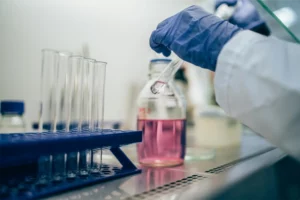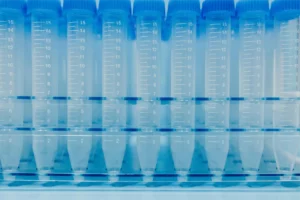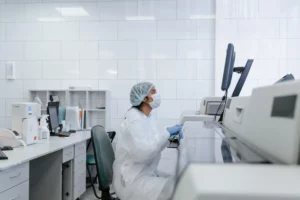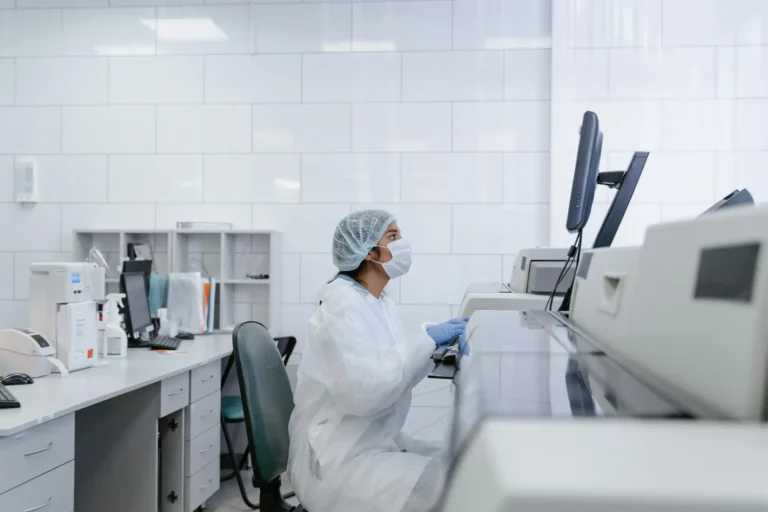Liquid chromatography coupled with tandem mass spectrometry (LC‑MS/MS) has become the reference technique for quantitative bioanalysis in drug development, pharmacokinetics, toxicology studies, and biomarker research. As regulatory expectations for sensitivity and reproducibility rise, laboratories increasingly turn to LC‑MS/MS to quantify analytes at low concentrations in complex biological matrices. Yet even high-performance systems require careful optimization to reduce ion suppression, maintain stability across runs, and ensure long-term analytical robustness. Understanding the workflow, analytical challenges, and strategic solutions is key to delivering reliable results that can support confident scientific and regulatory decisions.
This article explores how advanced LC‑MS/MS instrumentation and refined method development approaches can overcome these hurdles, enhancing data quality and operational reliability in bioanalytical applications.
How LC-MS/MS Improves Sensitivity in Bioanalysis Compared to Traditional Techniques
LC‑MS/MS is a technique that separates analytes chromatographically and then ionizes them for detection by the mass spectrometer to detect analytes at trace levels while discriminating against complex biological backgrounds.

Traditional bioanalysis methods offer good specificity, but they often struggle to differentiate structurally similar compounds or detect extremely low analyte levels in variable matrices. Liquid chromatography with tandem mass spectrometry (LC-MS/MS) provides key advantages:
- Higher specificity with multiple reaction monitoring (MRM), reducing background noise.
- Ability to analyze multiple analytes simultaneously, increasing throughput.
- Enhanced dynamic range, accommodating both low and high concentration measurements.
- Reduced assay development time compared to ligand-binding assays (LBAs) due to direct detection.
Recent advances in LC-MS/MS technology, such as improved ion transmission in triple quadrupole instruments and enhanced ion collision focusing, have substantially increased bioanalytical sensitivity, allowing detection at picogram or sub-femtogram levels. For example, microflow LC-MS/MS setups have demonstrated up to sixfold sensitivity improvements by optimizing chromatographic flow rates and sample clean-up, thereby minimizing matrix interferences. This makes LC-MS/MS applications central in pharmacokinetic and drug metabolism workflows.
Understanding and Mitigating Ion Suppression: A Critical Challenge in LC-MS/MS
One of the most pervasive obstacles affecting LC-MS/MS sensitivity is ion suppression, an effect where co-eluting matrix components reduce the ionization efficiency of target analytes, leading to decreased signal intensity and compromised quantification accuracy. Addressing ion suppression is essential for achieving robustness in bioanalysis. Ion suppression in LC-MS/MS analysis is usually led by inadequate sample cleanup, co-eluting endogenous matrix components, mobile phase composition, and pH conditions, or ion source contamination. To mitigate it, there are several strategies:
- Optimizing sample preparation to remove endogenous interferences using techniques like solid-phase extraction (SPE) or protein precipitation.
- Employing chromatographic approaches to separate analytes from matrix components, including microflow LC, to improve peak resolution.
- Rigorous selection of precursor and product ions in MRM for maximized signal-to-noise ratios.
- Regular maintenance and cleaning of LC-MS/MS instrumentation interfaces to prevent contamination buildup that exacerbates suppression.
Understanding how to interpret an LC-MS chromatogram helps identify suppression zones: broad, noisy baselines or unexpected decreases in peak intensity often indicate matrix contribution.
By systematically monitoring matrix effects during method validation, it is possible to build robustness in bioanalysis that remains consistent across sample batches and biological variability.

LC-MS/MS Workflow Optimization: From Instrumentation to Method Development
Optimizing LC-MS/MS instrumentation and the analytical workflow directly influences sensitivity and reproducibility. Efficient mass spectrometry workflow design considers everything from autosampler settings to ion optics tuning.
Efficient LC-MS/MS method development requires a holistic approach encompassing both instrumentation setup and analytical protocol design. Enhancements in hardware and software have made workflows more accessible and reproducible across laboratories.
- Instrument configuration
Triple quadrupole systems are preferred for quantitative assays due to their selectivity. Source parameters such as gas flow, desolvation temperature, and capillary voltage should be tuned for each analyte class.
- Chromatographic separation
Selecting appropriate chromatographic columns and flow rates tailored for bioanalytical targets bolsters separation efficiency and reduces matrix effects.
- Mobile phase optimization
Volatile buffers like ammonium acetate or ammonium formate often enhance spray stability and ionization efficiency for both positive and negative modes.
- Data acquisition settings
Transition selection should consider fragmentation patterns and collision energy tuning to maximize signal-to-noise ratios.
- Interface optimization
Careful tuning of interface parameters (capillary voltage, nebulizing gas pressure) during method setup significantly impacts sensitivity but is often overlooked post-installation. Employing hybrid surface technologies and inert materials in the LC flow path minimizes analyte loss and improves signal stability.
Implementing these optimized workflows leads to confident quantification with improved LC-MS/MS data quality and robustness, supporting regulatory compliance standards and accelerating drug development processes.

Troubleshooting LC‑MS/MS: Common Issues and How to Improve Robustness and Accuracy
Troubleshooting LC-MS/MS is essential to maintain instrument sensitivity and ensure reliable, accurate data. Common issues include ion suppression spikes that reduce analyte signal, inconsistent retention times caused by changes in chromatographic conditions or system wear, and signal instability often linked to ion source contamination or detector problems.
To address these issues, it is important to regularly monitor system performance using quality control samples and instrument health checks to catch deviations early. Diagnosing contamination sources through blank injections and routine cleaning of the ion source and liquid chromatography components also plays a key role in restoring optimal function.
Accurate interpretation of LC-MS/MS data requires distinguishing true analyte signals from noise or impurities, a task facilitated by specialized software tools offering automated alerts and guided corrective actions. Adopting a proactive approach to troubleshooting fosters continuous method improvement and enhances robustness in bioanalysis, ultimately ensuring LC-MS/MS results interpretation meets stringent accuracy criteria.
Bioanalytical programs in drug development require cutting-edge instrumentation, but also teams capable of designing, optimizing, and validating methods that remain stable across different matrices and study phases. Working with a partner that combines scientific rigor, specialized workflow design, and extensive experience in regulated environments is essential to maintain sensitivity and reproducibility over time. AMSbiopharma provides comprehensive bioanalysis support, including method development, validation, and study execution, enabling organizations to accelerate timelines while ensuring confidence in their data and regulatory outcomes.
If you’d like to explore how we can support your next study, contact our scientific team today!
References
Jiang D, Yuan L. Microflow LC-MS/MS to improve sensitivity for antisense oligonucleotides bioanalysis: critical role of sample cleanness. Bioanalysis. 2022 Nov;14(21):1365-1376. doi: 10.4155/bio-2022-0201
Shen JX, Liu G, Zhao Y. Strategies for improving sensitivity and selectivity for the quantitation of biotherapeutics in biological matrix using LC-MS/MS. Expert Rev Proteomics. 2015 Apr;12(2):125-31. doi: 10.1586/14789450.2015.1024225
Tang L, Swezey RR, Green CE, Mirsalis JC. Enhancement of sensitivity and quantification quality in the LC-MS/MS measurement of large biomolecules with sum of MRM (SMRM). Anal Bioanal Chem. 2022 Feb;414(5):1933-1947. doi: 10.1007/s00216-021-03829-z. Epub 2022 Jan 8. Erratum in: Anal Bioanal Chem. 2022 Mar;414(8):2787. doi: 10.1007/s00216-022-03957-0
Tanna N, Mullin LG, Rainville PD, Wilson ID, Plumb RS. Improving LC/MS/MS-based bioanalytical method performance and sensitivity via a hybrid surface barrier to mitigate analyte – Metal surface interactions. J Chromatogr B Analyt Technol Biomed Life Sci. 2021 Aug 1;1179:122825. doi: 10.1016/j.jchromb.2021.122825


